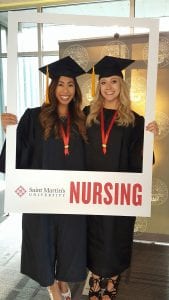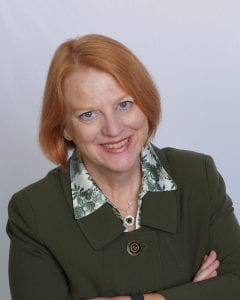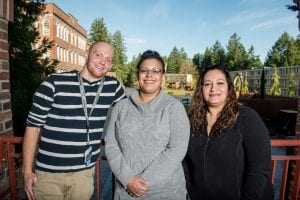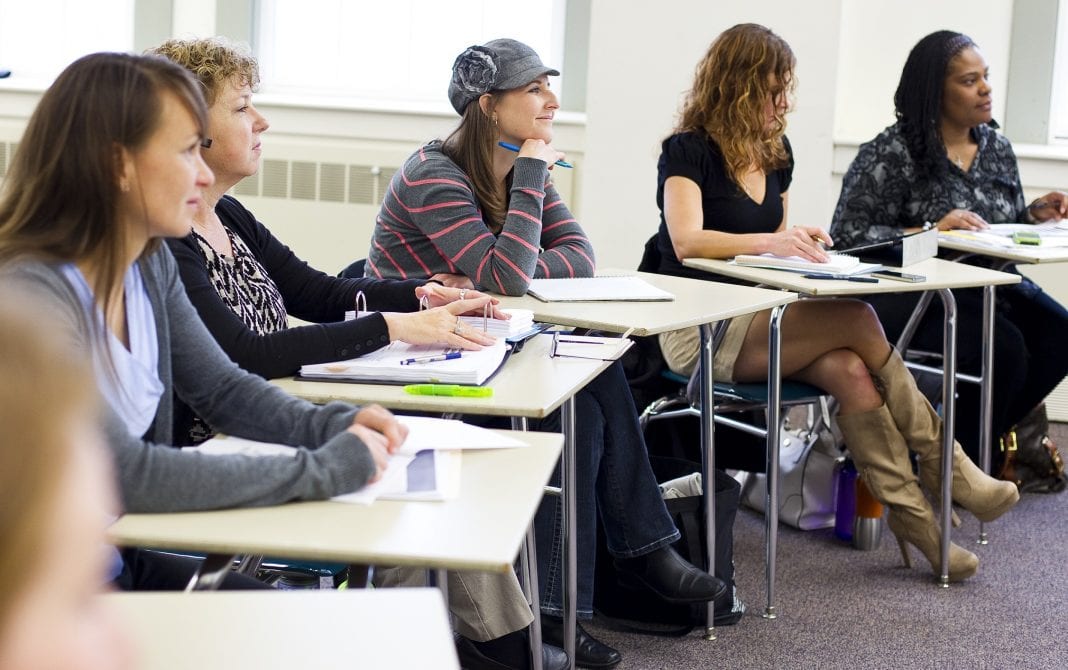The federal Bureau of Labor Statistics reports that between 2016 and 2026, more than 430,000 nurses will enter the workforce. With our aging population and advances in medicine and STEM sciences, their influence will be much needed and gratefully appreciated.
But becoming a nurse takes time, dedication and years of hard work. Thanks to Lacey’s Saint Martin’s University faculty and staff, nursing degrees come with an extra dose of heart.

Our country is facing a tremendous nursing shortage so Saint Martin’s programs are timely and important. The American Nurses Association reports that: “By 2022, there will be far more registered nurse jobs available than any other profession, at more than 100,000 per year. With more than 500,000 seasoned RNs anticipated to retire by 2022, the U.S. Bureau of Labor Statistics projects the need for 1.1 million new RNs for expansion and replacement of retirees, and to avoid a nursing shortage.”
Saint Martin’s offers two educational paths for those interested in a nursing career. Their new bachelor of science in nursing (BSN) is a degree for students who aren’t already nurses. The RN-to-BSN program allows registered nurses (RNs) with an associate degree or diploma in nursing to obtain a BSN in as little as one year.
“Saint Martin’s has a diverse student body, which will lead to a diverse nursing program,” says Teri Moser Woo, Ph.D., professor and director of nursing. Woo started with Saint Martin’s in July 2018 “with a goal of increasing enrollment in the RN-to-BSN program and starting a traditional BSN program.”
The school has offered nursing education several times throughout its long history. Their first RN-to-BSN program started in the late 1980s, but was phased out approximately a decade later.
“In 2010, the current university administration began to consider adding an RN-to-BSN program in response to the vital need for RN-to-BSN education in Washington State, which has set a goal of 80 percent of RNs in the state having a BSN or higher degree by 2020,” says Woo. “In 2012, the first class of RN-to-BSN students was admitted. The RN-to-BSN program has two faculty and will have 14 students enrolled in the spring 2019 semester. The nursing program is accredited through the Commission on Collegiate Nursing Education (CCNE) and we had a successful re-accreditation visit in September 2018.”

Starting in the fall of 2019, Saint Martin’s will also offer a four-year, pre-licensure BSN program. This program is for those not already working in the field. Though the program will start small, there is tremendous growth potential in enrollment and post-graduate employment.
“The anticipated pre-licensure BSN program will enter 20 to 25 first-year students in fall 2019,” explains Woo. “In fall 2020, the upper division pre-licensure BSN program will enter 24 students fall semester and 24 students spring semester. Twice-a-year entry will allow for half of the class to be transfer students and half students who spend all four years at Saint Martin’s. When the BSN program is fully enrolled, we expect to have 10 full-time nursing faculty between the two programs.” They hope to graduate nearly 50 nurses a year starting with the 2022-2023 academic year.
To encourage RN-to-BSN nursing students to enroll, Saint Martin’s has reached out to students and registered nurses across the region. They provide merit scholarships for every student, which keeps the cost of the RN-to-BSN program consistent with many online programs, Woo adds. Traditional BSN students will receive merit scholarships as well.
The RN-to-BSN program was crafted so that working nurses attend class only once a week for one year to obtain their BSN, with all clinical work and projects done locally. The program has the advantage of blended learning, where students know their faculty and network with their classmates by attending class once a week, but have some coursework online to allow flexibility around their work schedule. The nursing faculty at Saint Martin’s get to know their students in a small class setting, addressing each students’ learning needs.

After these programs find their footing, Woo and her team will look toward developing a graduate nursing program. “As we get closer, it will be critical to assess the local needs for nurses with graduate degrees,” Woo shares. “There is a critical shortage of nursing faculty in Washington and the South Sound, and nurses with both a master’s or doctoral degree can teach at community colleges and at universities, so a master’s in nursing education may be our first offering or a master’s degree in clinical leadership,” says Woo.
Everyone’s life is touched by the kind, skilled care of a nurse. They’re a comforting, knowledgeable, compassionate presence when we need it the most.
If you’ve considered a career change or need to complete your healthcare degree, give Woo and the Saint Martin’s nursing staff a call at 360-412-6129.
Saint Martin’s University will be entering students into the traditional BSN program beginning fall 2019, pending approval from the Washington Nursing Care Quality Assurance Commission.
Sponsored













































